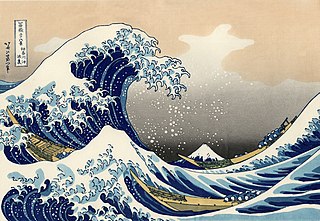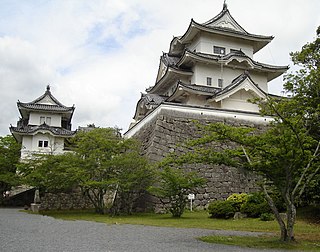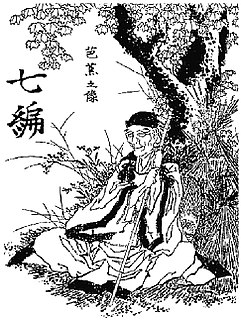Manko(万乎, ? - August 15, 1724) was a Japanese haikai poet of the middle Edo period. He was a wealthy merchant in Ueno, Iga Province, now known as Mie. [1] He is best known for his relationship with Matsuo Bashō and for his poetry. [2]
Haikai may refer in both Japanese and English to haikai no renga (renku), a popular genre of Japanese linked verse, which developed in the sixteenth century out of the earlier aristocratic renga. It meant "vulgar" or "earthy", and often derived its effect from satire and puns, though "under the influence of [Matsuo] Bashō (1644–1694) the tone of haikai no renga became more serious". "Haikai" may also refer to other poetic forms that embrace the haikai aesthetic, including haiku and senryū, haiga, and haibun. However, haikai does not include orthodox renga or waka.

The Edo period or Tokugawa period (徳川時代) is the period between 1603 and 1868 in the history of Japan, when Japanese society was under the rule of the Tokugawa shogunate and the country's 300 regional daimyō. The period was characterized by economic growth, strict social order, isolationist foreign policies, a stable population, "no more wars", and popular enjoyment of arts and culture. The shogunate was officially established in Edo on March 24, 1603, by Tokugawa Ieyasu. The period came to an end with the Meiji Restoration on May 3, 1868, after the fall of Edo.

Ueno was a city located in Mie Prefecture, Japan. The city was founded on September 10, 1941. It was often referred to as Iga-Ueno to avoid confusion with other Uenos, including one in Ise Province which is now part of Yokkaichi.
Contents
On April 3, 1691, Manko met Bashō and led him to his residence, where the former became a pupil. In total, some sixty of his verses were published. [1] His main contributions can be found in Sarumino (1691), Sumidawara (1694), and Zoku-sarumino (1698). [2]
Sarumino is a 1691 anthology, considered the magnum opus of Bashō-school poetry. It contains four kasen renku as well as some 400 hokku, collected by Nozawa Bonchō and Mukai Kyorai under the supervision of Matsuo Bashō. Sarumino is one of the Seven Major Anthologies of Bashō, and, together with the 1690 anthology, Hisago, it is considered to display Bashō's mature style (Shōfū) at its peak. Bashō's influence on all four of the kasen in Sarumino was profound and when he sat with Bonchō, Okada Yasui and Kyorai at Yoshinaka Temple to write "Kirigirisu", he extolled them, "Let's squeeze the juice from our bones."








